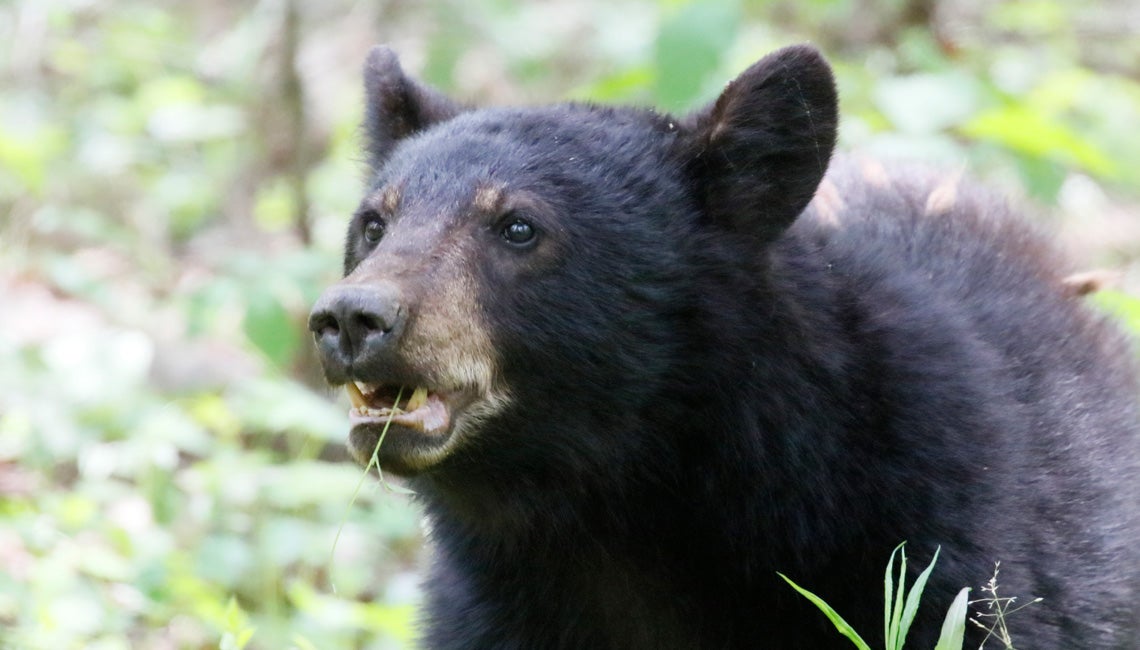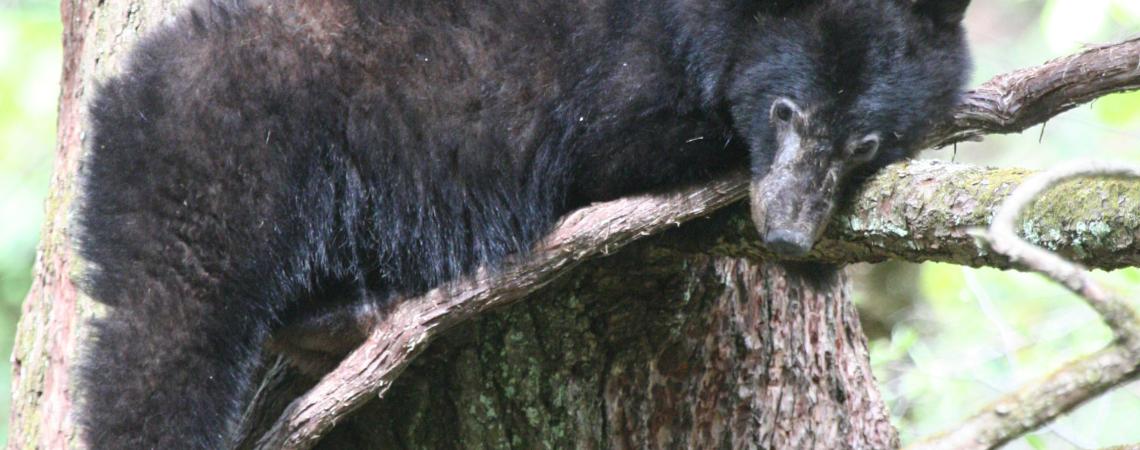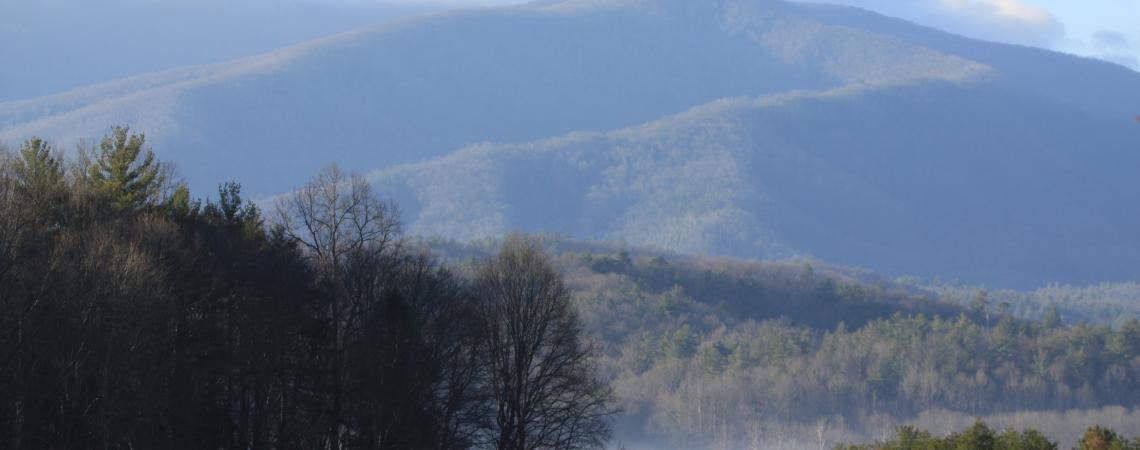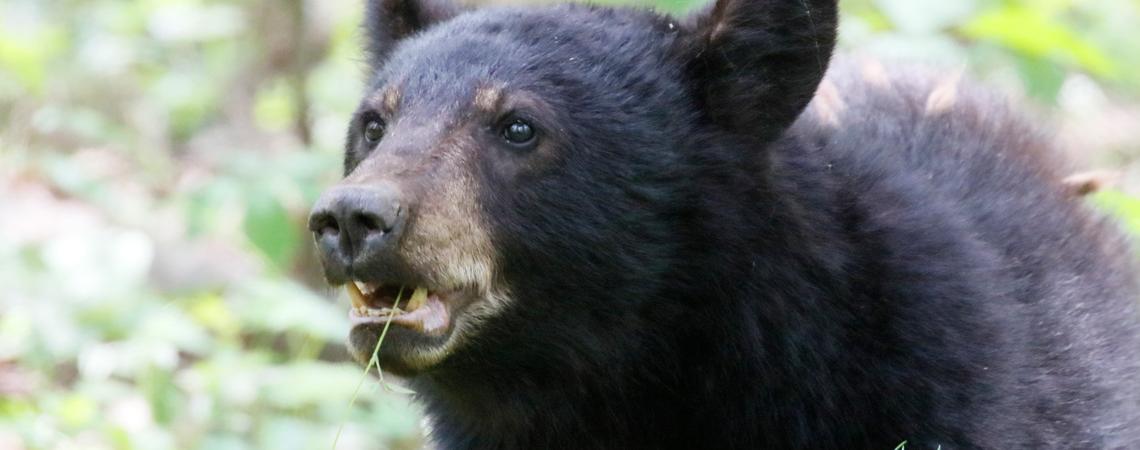I’ve lived in Ohio all my life, spent tons of time in the outdoors, and have never encountered a black bear in the wild in the Buckeye State. That’s not to say they’re not here, of course. The Ohio Department of Natural Resources estimates Ohio’s black bear population at only five to 15 resident individuals and anywhere from 50 to 100 transient bruins. Given the size of our state, that puts the chances of finding a cooperative bear to photograph somewhere near those of me winning a beauty contest.
There’s another option, however, and not too far from Ohio, for anyone who’s always wanted to photograph, or at least see, a black bear in the wild. But first — and this is important — understand that although photographing a bear is a thrilling experience, it obviously must be done safely, or the encounter could become a bit too thrilling. A sow defending her cubs or a male defending his territory can be particularly dangerous.
A black bear lounging in a tree
Predictably unpredictable, black bears are not the bumbling oafs or cuddly teddy bears they are portrayed to be on some television nature programs. No matter where they live, by nature a bear is still a bear, and they are much stronger, smarter, and more adaptive than most people realize. They are also fast, able to run 30 miles per hour for a short distance (the best an Olympic sprinter can do is in the low 20s). It is the wise wildlife photographer who gives bears a wide berth.
How best, then, to safely photograph bears? Shooting bears with a camera is one instance when a telephoto lens is an absolute necessity, as it gives you plenty of working distance yet still allows you to fill the frame of your camera’s viewfinder with the photo subject. So how close is too close? A good rule of thumb is that if your presence changes the natural behavior of a bear, you’re too close.
My personal choice of photography equipment for bears and other wildlife is a Canon EOS 7D Mark II camera body attached to a 100–400 mm Canon zoom lens. Though certainly not the latest and greatest body, this camera was designed for sports/wildlife photography and has been a workhorse for me for years. In fact, most of my photos that have accompanied my features in Ohio Cooperative Living magazine through the years were taken with this camera. In addition, I often mount a 1.4X teleconverter (multiplier) between the body and lens, giving me 560 mm of reach. I sometimes steady the camera and lens with a monopod.
If you don’t care to invest in traditional photo equipment, some late-model cellphones have excellent zooming capabilities and produce professional-quality images. An added benefit of cellphone photography is that most people carry their phones with them all the time.
All that said, what is my suggestion for where and when to shoot photos of black bears? Great Smoky Mountains National Park (GSMNP), on the border of Tennessee and North Carolina, is within a day’s drive of Ohio. It is the most visited national park in the country, and it’s loaded with bears. As a result, black bears are so used to seeing people that most pay little attention to visitors, often ambling by just a few yards away.
GSMNP encompasses a huge area, and bears are where you find them — but a good place to begin looking is Cade’s Cove, a paved, 11-mile-loop auto and bicycle trail. Visiting during this time of year helps tilt the odds of seeing a bear in your favor, as they’re fattening up — literally “hungry as a bear” — after losing weight during winter hibernation. For a photographer, that means more potential encounters with bears.
While photographing bears when other photographers are near and working the same subject, remember common courtesy. For instance, just this past spring I was photographing a yearling black bear at Great Smoky Mountains, the bear only a few feet off the road. As I started shooting, however, I heard a vehicle pull up behind me, stop, and a car door open. A young man in his twenties jumped out, ran up with cellphone in hand, positioned himself squarely between me and the bear, and took a selfie with the bear in the background. He then yelled to his buddies in the car, “Got it!” Running back to the vehicle, he jumped in, slammed the door, and the car roared off.
The young man was way too close to the bear for his own safety, but fortunately the yearling was spooked into the underbrush and didn’t come at him. Nevertheless, it was game over for me and the other few photographers who had been shooting that particular bear. It should go without saying, but don’t be “that guy.”












